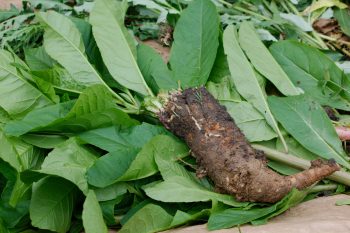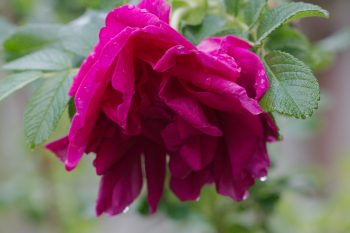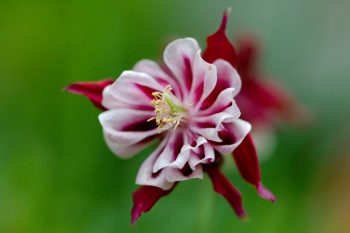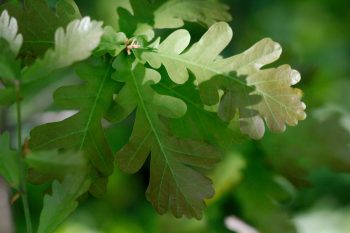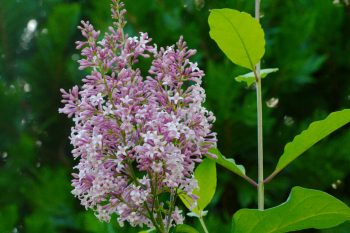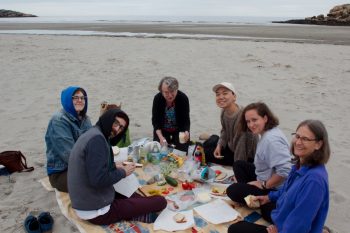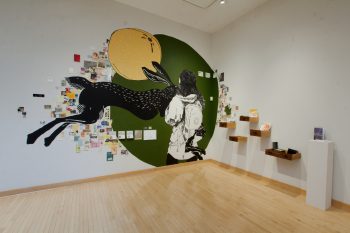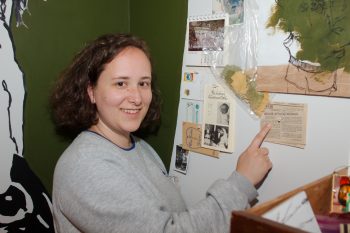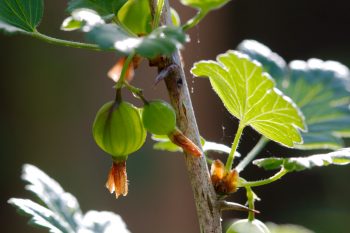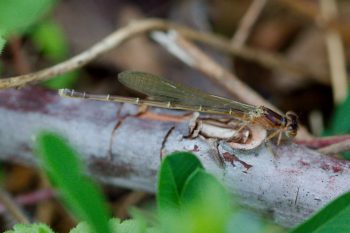Weeds are incredible. They grow so fast, are hard to get rid of, and can easily take over your yard. I’ve mentioned that last year we didn’t do a lot of gardening and the weeds got the upper hand. This spring they are coming up in force. In the big patch of lily of the valley (Convallaria majalis) the Canada thistle Cirsium arvense was so thick you could barely see the lily of the valley. I spent the morning pulling it up and it looks so much better. I also dug up some pokeweed (Phytolacca americana). That’s what is photographed here, leaves and root of pokeweed (and you can see a little Canada thistle at the top). This huge root was a bit of work to get out. I’m not naive enough to believe it won’t come back from the small amount of root left in the ground, but getting this huge root out is a necessary first step.
Monthly Archives: May 2019
Weeds
Roseraie De l’Hay
My roses have had a rough few years. Three of them outright died in the last twelve months and I’m not entirely sure why. This one, a hybrid rugosa named ‘Roseraie De l’Hay’ lost a lot of stems but is still hanging on and has just started to bloom. The stems are relatively thin and the heavy flowers are too much for them, so they face pretty much downwards, especially after a rain. Like most rugosas, this rose has a really wonderful scent and the leaves are a beautiful green, generally untouched by any disease.
Silas
Iris was out of town and it was Seth’s birthday so we thought we would bring him dinner and have a short visit. It turned into a family dinner night, which was fine and in fact, really great. We had both of the next generation there, Silas and Kaien, so there was plenty for me to photograph. Kai, as the older cousin, is much more aware of and involved with things going on in the room. He is also talking quite a bit although I can’t say I always understand him on the first try. Silas is less involved but he is definitely becoming aware of things going on around him. With his mom not there and with only having had a short nap today, he was somewhat subdued. I think that comes through in this photo of him. He’s very good-natured and seems relaxed, at least as long as one of his parents is very close by. It’s been a lot of fun watching him grow and we’re so thankful that Iris and Seth (and Steve and Maya) are living so close.
Columbine
The columbine (Aquilegia canadensis) is really coming into bloom now in our garden. We have a few different varieties and I won’t swear that they are all this species (in fact I don’t think they are). But this one, I think probably is. It’s one of two that have flowers with a fuchsia or slightly purple color in their flowers. The other one is darker, almost tending towards a brownish red. It also has slightly more double white parts. They are both nice in their own way, and I’m pretty happy with this self seeding through out the garden. It doesn’t go out of control, like some self-seeders tend to do, so I don’t really mind.
Quercus robur ‘Fastigiata’
In 2013 I bought some fastigiate oaks from Musser Forests (http://www.musserforests.com/). Fastigiate is from Latin and means narrowing toward the top and when applied to trees, having upright usually clustered branches. Trees that have a more narrow form are often called fastigiate and these oaks are actually named Quercus robur ‘Fastigiata’. The English oak is a pretty tree, especially when it gets large, but it can be a bit much for a suburban garden, needing a huge space to be grown to full advantage. These narrow trees, however, should do reasonably well here. They are not quite as hardy as the species but I’ve seen them growing in the district and there is a huge one only a few blocks away, so I’m hopeful. I have them growing in two parts of the yard, one on the north end of the yard and one along the back (west side). Planted in 2013, they are already more than 10 feet tall, and growing quite quickly.
Korean Lilac
Ages ago I got some seeds of Syringa meyeri, the Meyer or Korean lilac, and they grew in a wooden box for years. Then we moved here in 2006 and they remained in the box, never getting more than about a foot tall. I finally planted them in the garden and for a few years they grew larger but didn’t bloom. Last year they bloomed and this year they are larger and blooming better still. They have large leaves and the flowers are at the top in fairly large terminal clusters (panicles).
Picnic On The Beach
After church this morning, we met up with a friend of Margaret’s and they went off together to visit. The rest of us went for a picnic on the beach. It wasn’t particularly warm and the sky was overcast but it was nice to be outdoors. We put a blanket down on the sand and made sandwiches (because on the beach, you can eat the sandwiches there). The herring gulls (Larus argentatus) were all around and hoping for any food that might come there way. I’m afraid they didn’t get much from us.
As we drove back we stopped at Niles Beach. From there we could see Boston, just over 25 miles to the southwest. I like the atmospheric quality of this photo so thought I’d include it along with the picture above of our picnic. I also like the not quite parallel lines of waves gently rolling in and changing with the subtly changing light.
After our outing, we visited with some friends in the area and then in the evening went to the penultimate Catacombs of Dorothy’s college career. It was a really nice time and a nice way to end the weekend visit.
Dorothy’s Art Installation
As mentioned in yesterday’s post, Cathy, Dot, Margaret, and I drove up to Massachusetts to see Dorothy’s senior art show, which was from 4:00 to 6:00 PM this evening. Considering school is nearly 500 miles from home, I think Dorothy had a pretty good crew of guests. Kendra and Jacob came the farthest, flying up from North Carolina. Emily and Jessica drove from Virginia and Rob and Susie drove from Maryland. Jean flew in this morning. Abba and Josh drove from Rhode Island. Of course there were a lot of her school friends there, as well. This is her piece and here’s her artist’s statement.
Pilgrimage
What makes a person? What dictates how we remember them, what we keep of them when they go away? How much of the story can we get from objects left behind, and how can our impression of that story change the trajectory of a family? We all encounter things that change us—spirits pass through and transform. To what extent do these encounters, proclivities, and transformations get passed down from parent to child?
This work explores the footprints we leave, the things we keep, and the things we throw away. We inherit traits genetically, but we receive much more from our families than genetic material. Repetitive, mythic cycles appear in family narratives, from a history of tight hip muscles, to a history of alcoholism, to a history of being in the wrong place at the wrong time. Stepping past the story of the individual, our family legends can teach us about the tasks that belong to us, the roads we are to take, and the whole to which we ultimately belong.
Dorothy and Rachel, another of the senior artists, are in a creative writing class together and their final project was related to their art project. Together they put together a book which read one way had Dorothy’s writing and flipped over had Rachel’s. I think the show was a success from pretty much every perspective. I enjoyed talking with the three art professors and they all had very nice things to say about Dorothy’s work.
One problem with this picture is that it’s a little hard to get the scale. The ceiling in this room is about 12 feet high, so this is a rather large installation.
Beaver Attacks Woman
We spent most of the day on the road today, driving up to Massachusetts to visit Dorothy for the weekend and see her senior art exhibit tomorrow evening. It was four of us, Cathy, me, and our two moms (Dorothy’s grandmas). We didn’t have traffic problems to speak of until we got onto Interstate 95 around Boston. Then it took us two hours to go 25 miles. We met up with Dorothy and went to the art building where the final preparations are under way. I’ll post a picture of Dorothy’s art tomorrow. Today, here’s Dorothy pointing out an article about a woman being attacked by a beaver.
Gooseberry
This gooseberry plant (Ribes uva-crispa) was originally put in by Albert in their yard. After he passed away, Brady said I could have it and it’s growing in the back of our garden. It blooms fairly early for a fruit bush and the fruit ripens fairly quickly. I really enjoy gooseberry jam, as I like most things of a tart nature. One thing to watch for when pruning and picking the fruit from a gooseberry bush is the thorns. They are quite sharp and vicious. There used to be a federal ban on growing gooseberry and other Ribes species but that was lifted in 1966. A few states still prohibit the growth of some or all Ribes species but they are all legally grown in Maryland.
Small Damselfly
I walked across Rt 28 today, wanting to be outdoors for a little while. On the slope leading down to a fairly large drainage pond there were little clumps of yellow flowers, most likely American wintercress (Barbarea orthoceras). I sat next to one such clump and took a handful of pictures. I thought about trying to get a photo of the swallows that were patrolling the pond and presumably helping keep the bug population under control. I didn’t really have the right equipment for that and it’s pretty tough, in any case, as they are really moving fast and are not very big. I settled for photographing this little damselfly instead.

